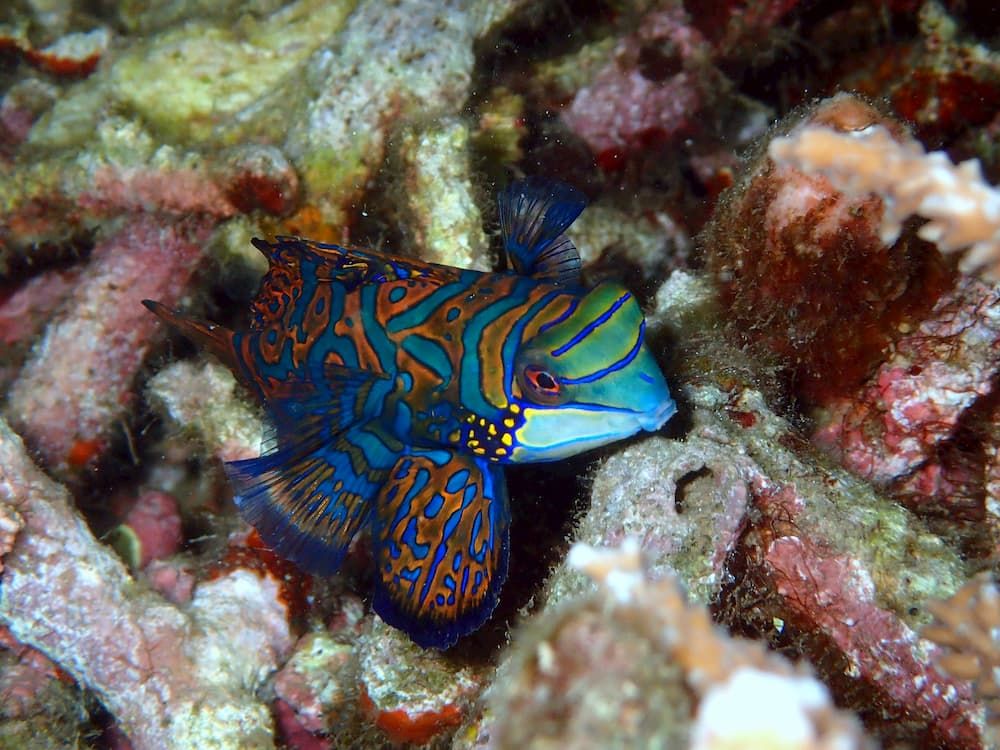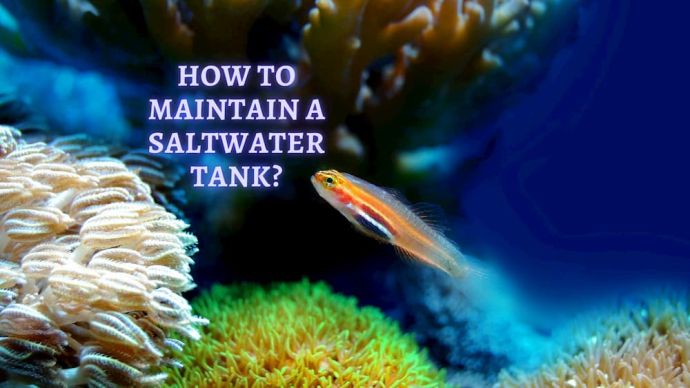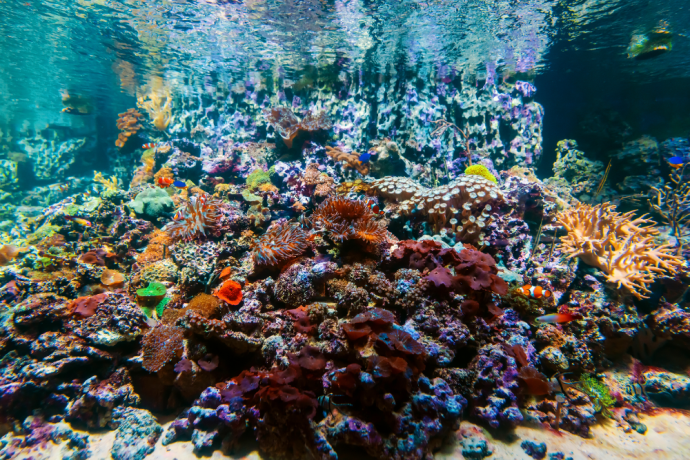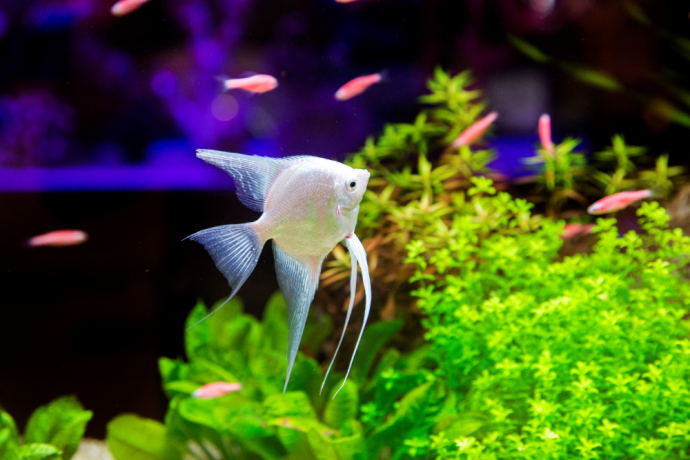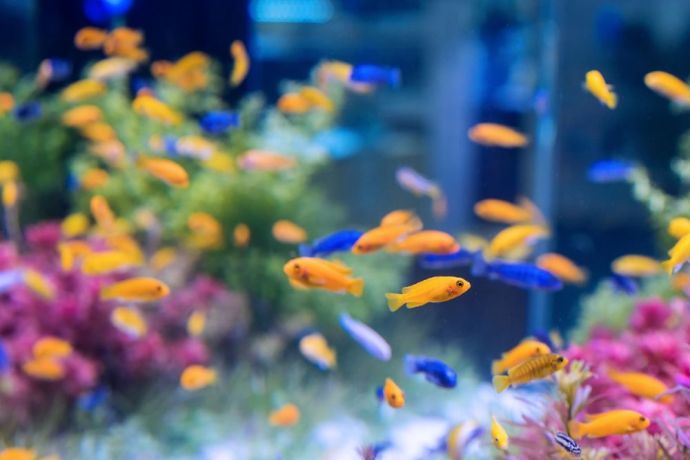Mandarin Fish Care Guide
Written by:
Author: Vicki Smirnova
Vicki Smirnova is a professional writer and editor who adores animals and helps readers get along well with their pets. She has been working in digital media for more than 5 years and has great experience writing content about lifestyle, including pets. Vicki specializes in dog health and nutrition, cat feeding, dog training. She is an aquarium lover and is passionate to write about fish care at home. Also, Vicki headed several websites and worked as a news editor.
View all 245 articlesLearn about our editorial process and veterinary review board.
Viewed: 188
Updated on: 10/20/2020
While Mandarin Fish is the common name for these beautiful creatures, it is used to encompass the majority of Callionymidae or dragonet family. While they are some of the most unique, eye-catching, and magnificent fish to have in your tank, they are certainly not for beginners. Mainly because of the unique dietary requirements of these fishes. However, once you overcome this hurdle, they are relatively low maintenance fish.
Are mandarin fish hard to keep?
Mandarin fish are easy and fun to take care of once you get into a routine. However, getting your head around their dietary requirements can be tough, especially if you are looking after a number of different species of fish all at the same time. The most important thing about looking after a Mandarin Fish is providing the constant availability of food. While this may sound near impossible on the surface, it is far from it once you know all the tips and tricks. Of course, you cannot be on hand 24 hours a day to drop food into the tank; therefore, you must rely on other food sources such as live rocks and enriched pods. These requirements bring us into the second main point regarding Mandarin Fish care as they enjoy a varied diet.
How many mandarin fish can live in one tank?
When it comes to Mandarin Fish, same-sex pairings can be a recipe for disaster in certain conditions. Unfortunately, these species tend to be territorial towards other Mandarin fish. However, it is possible to house a pair of same-sex Dragonets within the same tank if it is a large space. Male and female combinations usually work well in both small and large reservoirs. Therefore, if you have a small tank, either invest in a single Mandarin Fish or one female and one male. If you have a larger tank, feel free to introduce extra fish.
7 things you need to know about mandarin fish
- The ideal tank size for Mandarin Fish is around 50 gallons and they require a high standard of tank care.
- Mandarin fish love established coral reefs with thriving live rocks.
- These fish can live up to five years. Although, in the wild, they live up to 15 years.
- Mandarin fish can grow to be up to three inches in length.
- These fish are carnivores, but compatible with peaceful fish of a similar size.
- These fish are slow-moving and spend most of their time at the bottom of the tank.
- They are challenging to breed in captivity – but it is possible.
Mandarin tank set up
When it comes to the tank set up, Mandarin fish have specific needs that should be met. Ideally, you want to cater the tank to the fish as much as possible. These fish love space so try to avoid anything smaller than a 20-gallon reef tank. The optimum temperate for this tank should be between 72 and 82 degrees Fahrenheit. It would help if you also were looking to maintain a salinity level of between 1.023 and 1.025 within your tank, as well as a PH of between 7.9 and 8.4. Mandarin Fish love a healthy amount of established live rock, so be sure to add that to your set up.
READ MORE: Best Reef LED Lighting
Mandarin fish tank mates
As we mentioned above, you should always tread cautiously when including more than one Mandarin fish in the same tank when they are same-sex. However, it is also essential to understand how this species reacts to other fish. Likely, your tank will not be limited to Mandarin Fish, of course. The ideal scenario is to ensure that the Mandarin Fish are the first to be added to a tank. When introducing new tank mates, you can then slowly and gradually allow the Mandarin Fish to grow in confidence and warm up to the new faces. However, we appreciate that this method is not always possible. In other cases, ensure that you add the Mandarin Fish to the water well away from other inhabitants, allowing them to get a feel for the area before plucking up the courage to explore and swim towards their new tank mates. Some examples of ideal tank mates include:
- Seahorses
- Royal Grammas
- Green Chromis
- Firefish
- Clown Fish
- Watchman Goby
- Coral Beauty
- Small Damselfish
- Pajama Cardinals
Feeding
Mandarin Fish are carnivores, which means their diet is likely different to many fish you have dealt with in the past. When in the wild, Mandarin Fish eat a variety of small nearby creatures such as small snails, worms, copepods, fish eggs, and more. As we mentioned above, Mandarin Fish like to feed continuously throughout the day, meaning that they spend most of their time on the bottom of the tank in search of food. They will often consume whatever they can find on the side of live rock surfaces. When keeping Mandarin fish in a tank, the most effective source of food is a copepod.
In fact, it is one of the few things that the species will happily eat when housed within an aquarium. This is why live rock is so crucially important, as it sustains a population of copepod for the Mandarin Fish to consume at their leisure. However, if you have a tank under 70 gallons then your Mandarin fish cannot survive on rock-source copepod alone. Live brine shrimp are great alternatives and, while frozen shrimp can be used, your Mandarin fish may require a weaning period to grow used to them. To do this, you must gradually introduce frozen elements to their diet until they accept them. However, you should always thaw the frozen food before giving it to them.












